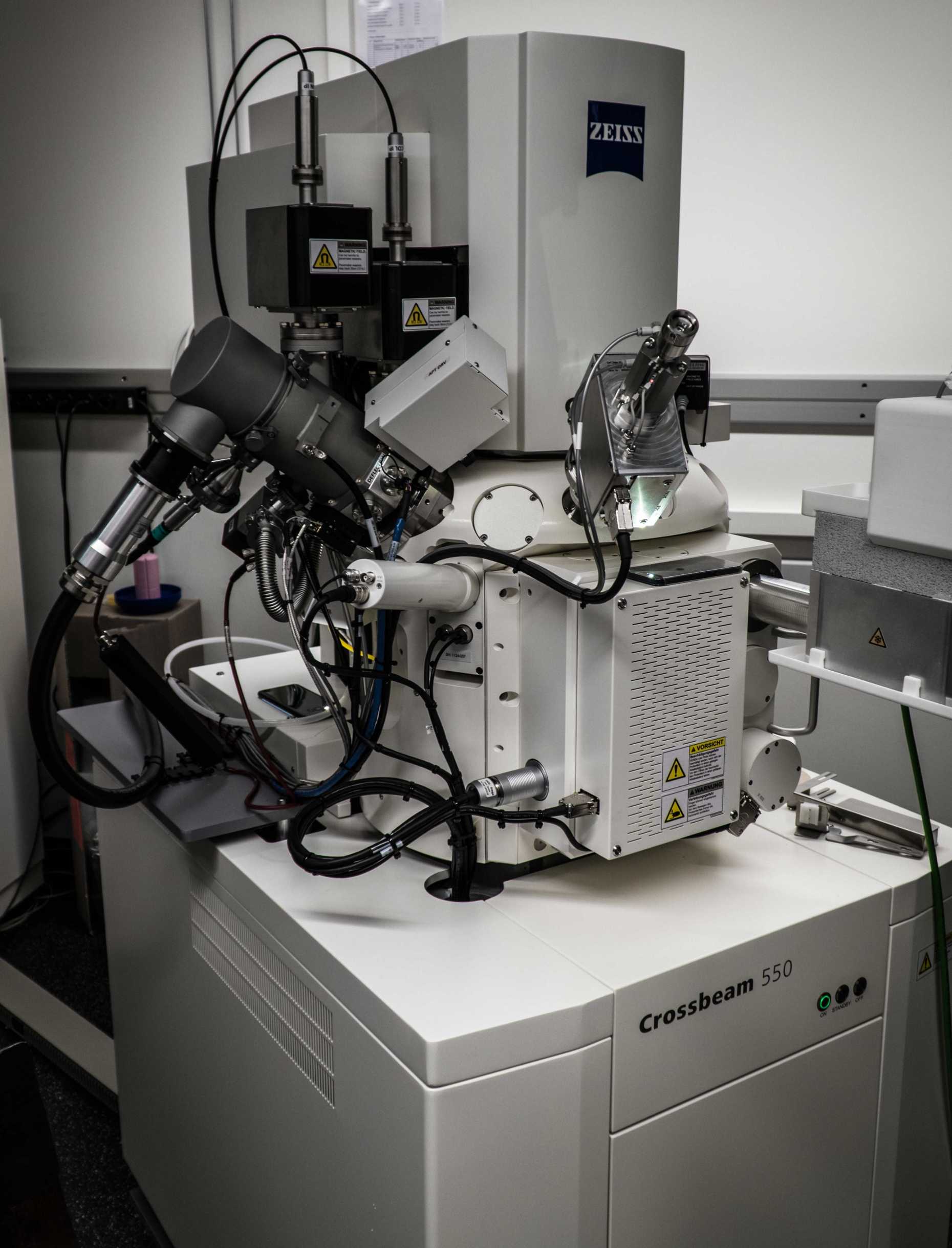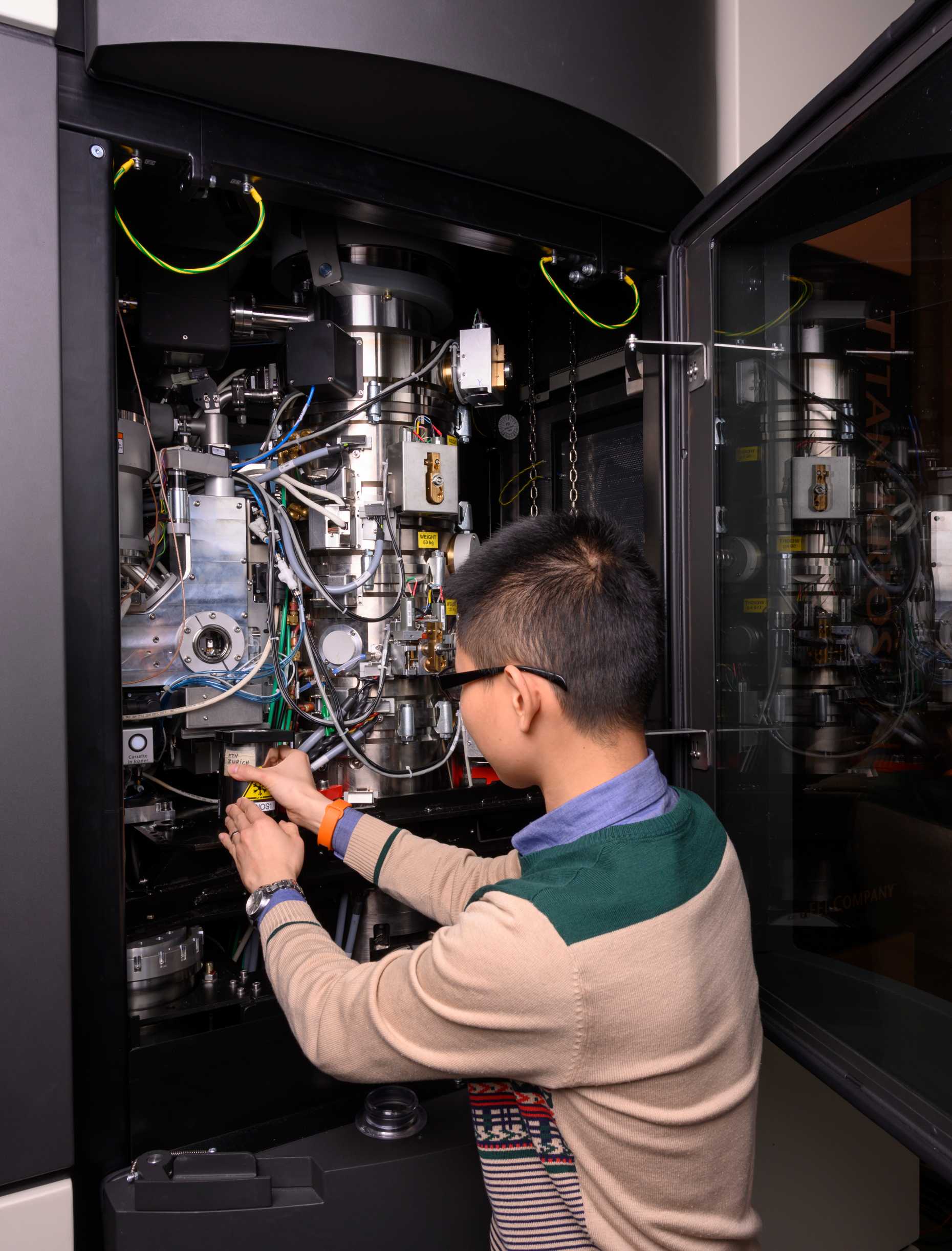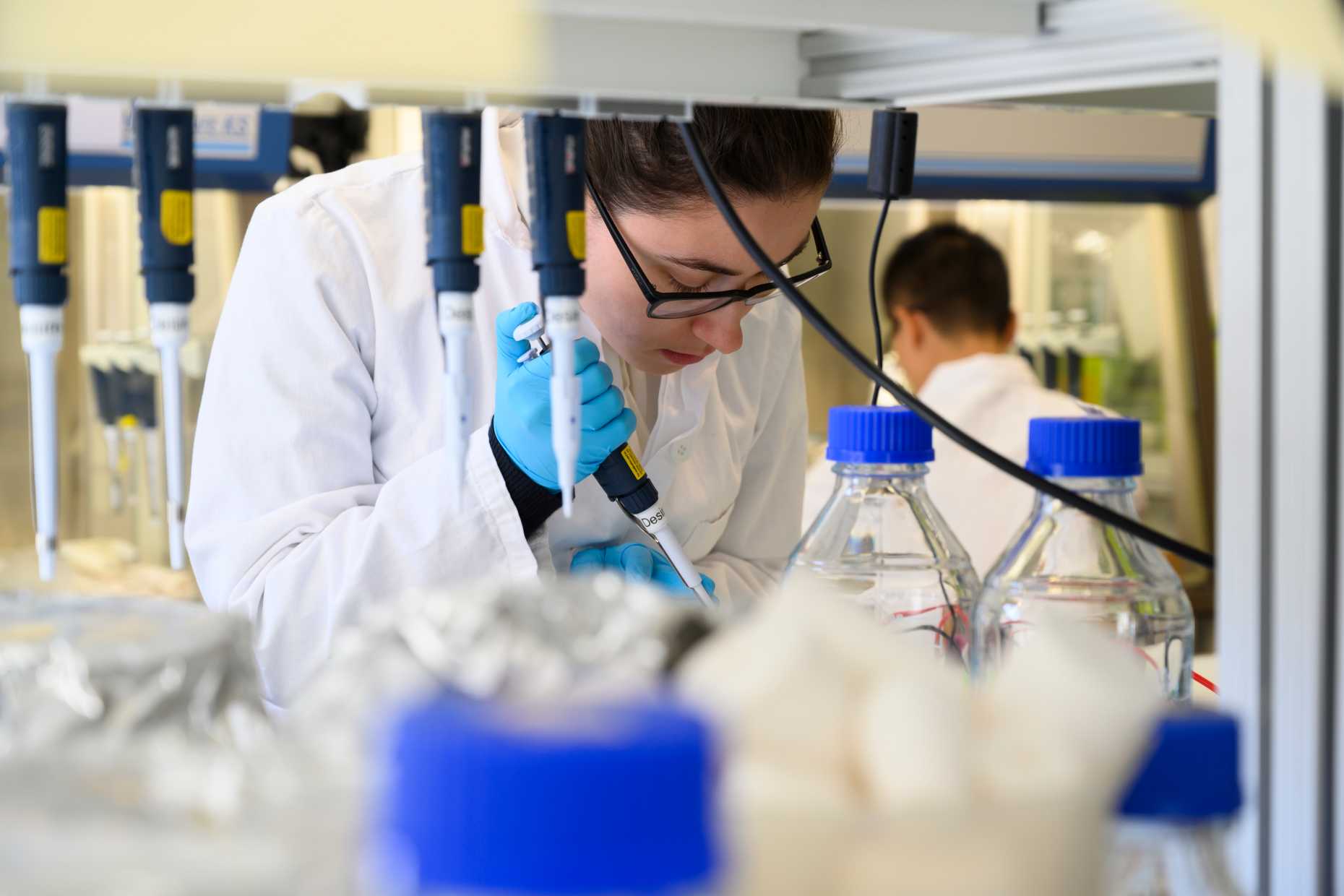Infrastructure
CryoEM instrumentation
We have access to three Titan Krios cryo-electron microscopes, equipped with imaging filters, direct electron detectors and phaseplates.
Vitrification is performed using plunge freezers (Vitrobots) and we have access to high-pressure freezers.
For cryoFIB milling, we use a Zeiss Crossbeam 550, Leica VCT500 cryoshuttle and Leica ACE600 sputter coater. We also have access to a ThermoFisher Helios dual beam instrument with a Leica VCT100 shuttle, Leica cryo-stage, and BalTec BAF060.
For cryo-light microscopy, we use a Zeiss LSM900 Airyscan2 confocal microscope equipped with Linkam cryo-stage.
Micropatterning of cryoEM grids is done on a Leica THUNDER imager equipped with the Alveole PRIMO system.
Platforms and Hubs
Lab members have access to state-of-the-art imaging instrumentation (LM and EM) at the ETH platform ScopeM.
The external pageFunctional Genomics Center Zürichcall_made offers a variety of services including mass spectrometry and sequencing.
We interact closely with Daniel Boehringer and his team from the CryoEM Knowledge Hub.



